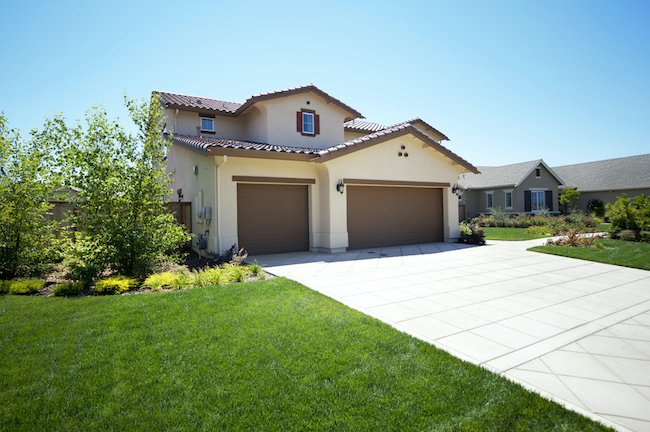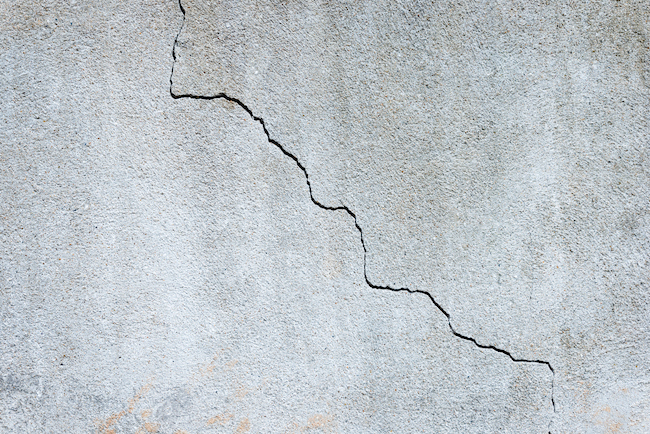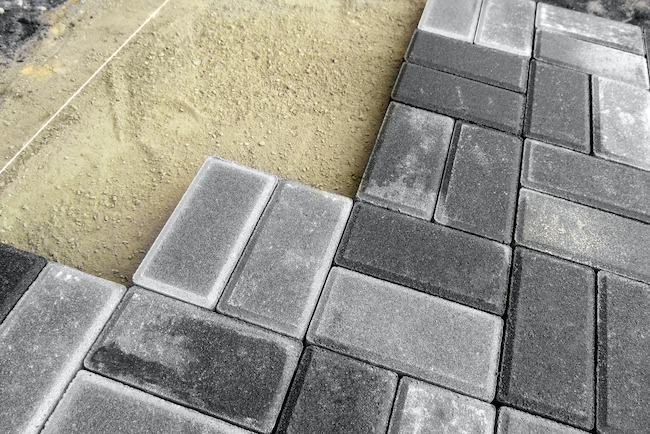

We may earn revenue from the products available on this page and participate in affiliate programs. Learn More ›
Concrete provides a sound structural foundation for homes and is ideal for slabs like patios, walkways and, driveways, but even this durable material can fall victim to damage caused by weather and time.
Typical concrete problems may include surface flaking (spalling), cracking, and discoloration, all of which can make the concrete look aged and worn. However, restoring concrete is often a project that can be done in just a few hours by even the most novice DIYer. With a little help from Quikrete products, you can get that weathered concrete looking new again in no time. This is how to tackle the most common concrete problems.

Problem: Flaking and discolored concrete driveway
Solution: Renew your driveway with Re-Cap Concrete Resurfacer
Driveways see a lot of vehicle traffic, so it’s common to find surface flaking caused by freeze-thaw cycles or discoloration from oil or ice-melting chemicals. You can easily give the driveway a fresh new look with Quikrete Re-Cap Concrete Resurfacer.
Resurfacing requires an extensive prepping process using a 3,500 psi pressure washer to clean the driveway and maintaining control joints by filling them with weather-stripping. You’ll also need to patch any cracks and fill depressions in the floor before applying a thicker consistency of resurfacing mix. As a cementitious product, the resurfacer has a limited working time of about 20 minutes, so it’s essential to have all the tools you’ll need (plus helpers) ready to go before starting the project. If you think you’d like to resurface concrete driveway, check out this video tutorial that walks you through the process.

Problem: Cracks in the foundation, driveway, or walkway
Solution: Fill and seal the cracks with Advanced Polymer Concrete Crack Sealant
Ground movement and repeated freeze-thaw cycles can cause a concrete foundation to crack. Before a crack gets wider than ½-inch and becomes a structural issue, you should repair it. Cracks ranging from hairline to ¼-inch wide that are not associated with any structural problem should be filled with an easy-to-use repair material like Quikrete Advanced Polymer Concrete Crack Sealant. The high-performance material permanently seals and waterproofs cracks in concrete with a textured matte finish, and the concrete repair material helps prevent cracks from returning.
Filling foundation cracks involves preparing the concrete surface to ensure a strong bond. This includes widening a narrow crack with a hammer and chisel until it’s at least ¼-inch wide, and then using a steel brush to remove any loose concrete debris that might be in the crack. Filling the crack is a simple process that involves squeezing a uniform bead of concrete repair caulk into the crack and then smoothing the caulk flush with the concrete surface using a putty knife. When dry, the caulk will closely match the color of natural concrete. See how simple it can be to fill foundation cracks with this video.

Problem: Sunken pavers in a walkway
Solution: Remove and reset pavers using All-Purpose Sand
Concrete pavers are a popular choice for patios and walkways. Laid over a bed of sand for stability, they offer a flat, solid surface in a variety of colors and textures. Unfortunately, the sand that supports the pavers can shift over time, be eroded away by running water, or the soil beneath the sand can sink, leaving an unsightly depression in the center of the surface. Not to worry. This type of surface was installed without mortar, so it’s a simple DIY project to remove the sunken pavers, build-up the low area with Quikrete All-Purpose Sand, and then reset the pavers. Download the complete instructions from Quikrete.

Problem: Broken concrete edges on sidewalk or steps
Solution: Sculpt and recreate a new concrete edge with Polymer Modified Structural Repair
The edges and corners of steps and stairs are especially vulnerable to breaking off over time, due to a combination of heavy traffic, freeze-thaw cycles, and clumsy lawn equipment operators. Fortunately, it’s easy to restore these broken concrete edges to their original crisp form with Polymer Modified Structural Repair from Quikrete.
After mixing the Polymer Modified Structural Repair, using firm trowel pressure, build up the material in ½-inch lifts, then sculpt the new edge into the desired shape, but be quick as you’ll only have about five to seven minutes before it begins to set. Like other concrete repair projects, thoroughly cleaning the surface before applying the mix is critical for a strong bond. Watch this video tutorial for complete instructions.
This content is paid advertising created in partnership with Quikrete. Its facts and opinions are those of BobVila.com.